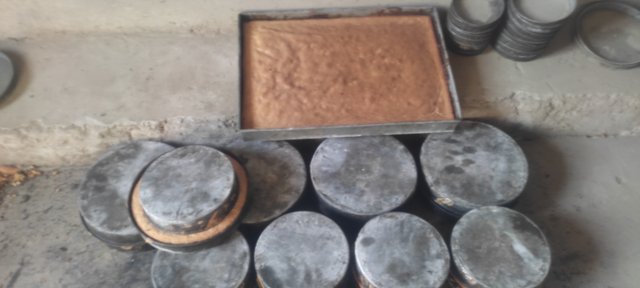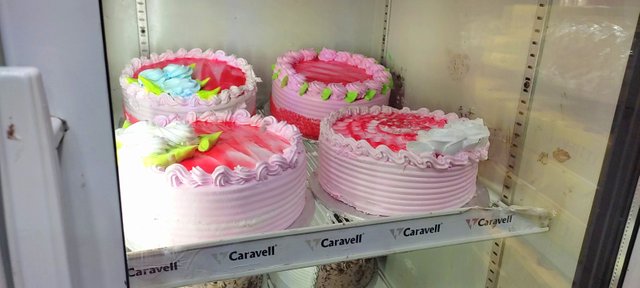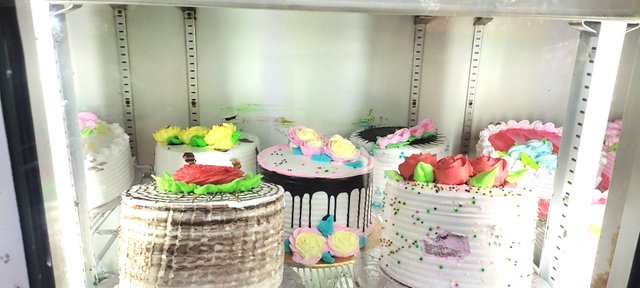Hello everyone!

Image by Alex Barcley from Pixabay
What is cost and how important is it for entrepreneurs?
Cost is the value of resources and the business uses it to produce goods or to deliver services. It is an important aspect for the entrepreneurs to understand and manage the cost. It has a direct impact on the profit and pricing strategies as well as budget. It impacts the overall financial health. We can divide costs into different categories:
- Fixed Costs: These are the fixed costs. They do not change with production levels. Fixed costs include rent, salaries and insurance.
- Variable Costs: These are the costs which fluctuate with the production. Variable costs include raw materials and utilities.
- Direct Costs: These are the costs which are directly linked with the production of the product or service. Direct costs include labour costs and material costs.
- Indirect Costs: These are the costs which are not directly linked with the production. These are the support operations such as administrative expenses.
Importance of Cost for Entrepreneurs
Cost is very important for the entrepreneurs. The importance of cost for the entrepreneurs is given below:
- Profitability: If an entrepreneur understands the costs then it can help to set the prices. The prices should cover the expenses and generate profits.
- Budgeting: It is required to get the complete information for the cost for the entrepreneurs. Because accurate information of cost is effective to create the budget. It helps to allocate resources effectively.
- Pricing Strategy: Cost also helps the entrepreneurs to develop pricing strategies. Good pricing strategies attract customers and also ensure profitability.
- Cost Control: The proper information of cost helps to keep all the operations smooth. It helps to minimize the waste and to increase the efficiency.
- Investment Decisions: As investment is based on the cost so it plays a key role while assessing the viability of new projects. Seeing our Cost we can expand our business as well as we can go with partnerships.
- Risk Management: Huge costs can lead to financial strain. The management of the cost helps the entrepreneurs to reduce the risks. Risk management makes the business strong and sustainable.
It is very necessary for the entrepreneurs to maintain a balance between the cost and the value of the product. It is a way For the long term success in the market.
Establish the difference between costs and expenses, giving examples of this through a real case.
Costs and expenses both are the outflows of money. But they serve for the different purposes in a business. Here is the difference between the costs and expenses.
Costs
This is the outflow of money which is spent to get or produce the products. This is directly related to the production process or for the creation of the assets in the business. Cost are often used to buy the assets to run the business. These assets are used for the future benefits.
Costs can be used to purchase raw materials and machinery. We can also spend costs on other items which are directly related to the production of the products. The outflow of money to give services also comes in the circle of costs.
Expenses
This is the outflow of money on a daily basis. It is used to generate revenue. This outflow of money does not create long term assets. Expenses are regularly consumed in a given period. These are recorded on the income statement.
Some examples of the expenses are rent, utilities, salaries and the supplies of the office.
Real World Case Example: A Bakery
I am taking the example of a bakery which produces cakes and pastries and sells them.

Costs
Bakery needs baking machines for the production of the cakes and pastries such as ovens and mixers. They also need pastries and cakes ingredients such as flour and sugar. These are the essential things for the bakery. So the bakery will buy the ovens, mixers and ingredients to start it's production.
 |  |
|---|
The ovens and mixers are the long term assets for the bakery. Flour and sugar are the required materials which are directly related to the production process. All the outflow of money to purchase these things will come in the circle of costs.
Expenses
Bakery needs a space to show it's existence. So in order to get the specific space it needs to pay monthly rent. The bakery needs to pay utility bills and the salaries of the employees. The bakery needs to pay money for the marketing of it's brand. All these firms of the outflow of money are considered as expenses.


Expenses are consumed during the current period to perform the operations. But the expenses do not directly produce the products. They just have the value for a specific time period.
Note: I have said the bakery needs space and it needs to pay monthly rent so it is an expense. But if the bakery permanently buys the space it becomes the asset of the bakery and it comes in cost. After buying, it is now a long term and forever asset of the bakery.
In this way all the costs of the bakery are the investments to buy the assets which are used to create the products. But on the other hand expenses are the outflows of the bakery which are used for the running of the business properly. Expenses are not ever lasting.
If someone becomes able to manage the costs and expenses properly then they can ensure profitability and financial stability.
What are the benefits of performing a good cost determination?
Accurate determination of the cost has a lot of benefits for the business. Here is the complete information about how it adds value to the business:
Accurate Pricing
If we know the exact cost of the products or the services then we can set the reasonable prices for the products and services to compete with the competitors. Without the accurate determination of the cost the business can face underpricing. It leads to losses. It can also cause overpricing which leads to lose the customers. The customers move to other competitors.
Profitability Analysis
The understating of all the associated costs enables the business to assess the profit of the products and services. It helps to analyze each product individually. It helps to filter the products with high profit. Moreover it helps to identify those products which have higher costs but less profit.
Improved Budgeting and Forecasting
The accurate determination of the cost helps us to create an accurate budget and the financial forecasts. It helps the businesses to allocate resources effectively. The business can make great financial plans on the basis of the real projection.
Cost Control and Reduction
By analyzing the costs we can detect the inefficiencies or overspending. We can cut the costs without sacrificing the quality of the product.
Informed Decision Making
If we want to expand our business to add new projects then the information of the costs helps the leaders to make authentic decisions. It reduces th financial risk. It is a great strategy to expand the business by keeping in view the financial impact.
Enhanced Cash Flow Management
Good cost determination helps the businesses to manage the cash flow efficiently. They can determine how much cash is required to perform the business operations and to purchase the material.
Investor Confidence
Transparency is very important for every business. With the good determination of the costs then business enhance the confidence of the investors and stakeholders. It builds trust and attracts more funds.
Competitive Advantage
The good cost determination helps the business to offer more competitive prices of the products than the other competitors in the market. It is beneficial for the growth of the business.
On the whole good cost determination is necessary for the good financial health. It enables the business to be agile and transparent in the market.
How do you determine the costs of your business? If you are not an entrepreneur, how would you do it?
I am not an entrepreneur so I will answer it accordingly. To determine the costs of a business I will follow these steps:
Identification of Types of Costs
First of all I will identify all the types of the costs associated with the business. I have already e plained the types of costs in the first question and I will give a short description of these tasks here. So the types of the costs of a business are given below:
- Fixed Costs: These are fixed costs such as rent and salaries.
- Variable Costs: These costs can change with production or sales volume such as raw materials and packaging.
- Direct Costs: These are directly linked with the production of the product or service such as labor.
- Indirect Costs: These are the overhead costs. They support production but they are not directly linked to it such as utilities.
Break Down Production Costs
For a product based business I will calculate the cost of each unit by summing up all materials such as labor and overhead costs with production. For example if I am making furniture then I will consider wood, nails, paint, labor hours and the use of machinery.
On the other hand if I will have a service based business then I will look at the labour and other materials which are directly used to deliver the service such as consulting tine and the costs of the software.
Calculate Operational Expenses
- The operational expenses include ongoing expense of the business. These operational expenses include rent and utilities. They include the office supplies, marketing and administrative cost. These are the required expenses which are used to run the daily operations of the business.
Include Financing Costs
- If I borrow money to start or expand the business I will include interest and all the fees associated with finance as a part of the cost structure.
Account for One-Time and Unexpected Costs
- It is necessary to expect the occasional costs such as equipment repairs. It also includes upgrades and professional fees. If we add a buffer for the unexpected cost then it can help us to maintain the accurate pricing and budgeting.
Calculate Total Cost Per Unit
- It is very helpful to find out the total cost per unit of service. For this purpose I will combine all the costs and then I will divide them by the number of units produced. It helps to set the reasonable price which can cover the costs and allow for the profit margin.
Example in Action
I am taking a hypothetical example of running a coffee shop. So I will determine the costs by summing:
- Fixed Costs: Monthly rent, salaries for permanent staff, insurance.
- Variable Costs: Ingredients like coffee beans, milk, sugar, and disposable cups (which vary based on demand).
- Direct Costs: Barista wages and utilities tied to producing coffee.
- Indirect Costs: Marketing, cleaning supplies, and general utilities (lighting, heating).
After gathering and analyzing all these costs, I’d use them to set coffee prices that cover expenses while leaving room for profit. This thorough approach ensures that I’m prepared for stable operations, growth, and pricing decisions.
This the participation post of week 1 for the season 21 for the lecture of costs for entrepreneurs by @yolvijrm but due to illness I was unable to publish it and I forgot to publish because of my health. So I am making this post here.
Yours: @mohammadfaisal